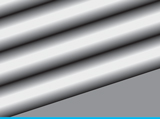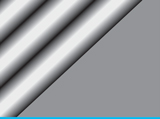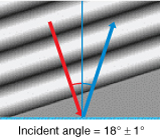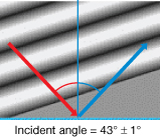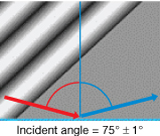Module 8—Mechanical Waves
 Explore
Explore
Mechanical waves require a medium to move through. For example, water waves travel through water, typical sound waves travel through air, and seismic waves travel through Earth’s surface. You have learned that there are different kinds of mechanical waves—transverse and longitudinal. These waves differ in how the medium is disturbed as the waves move through it.
reflection: a change in direction when a wave strikes and bounces from a surface
Waves also exhibit other distinctive behaviours. Some of these behaviours are common to both particle and wave motion, while others are specific to just wave motion. In this lesson you will investigate what happens when a wave bounces off a surface—reflection.
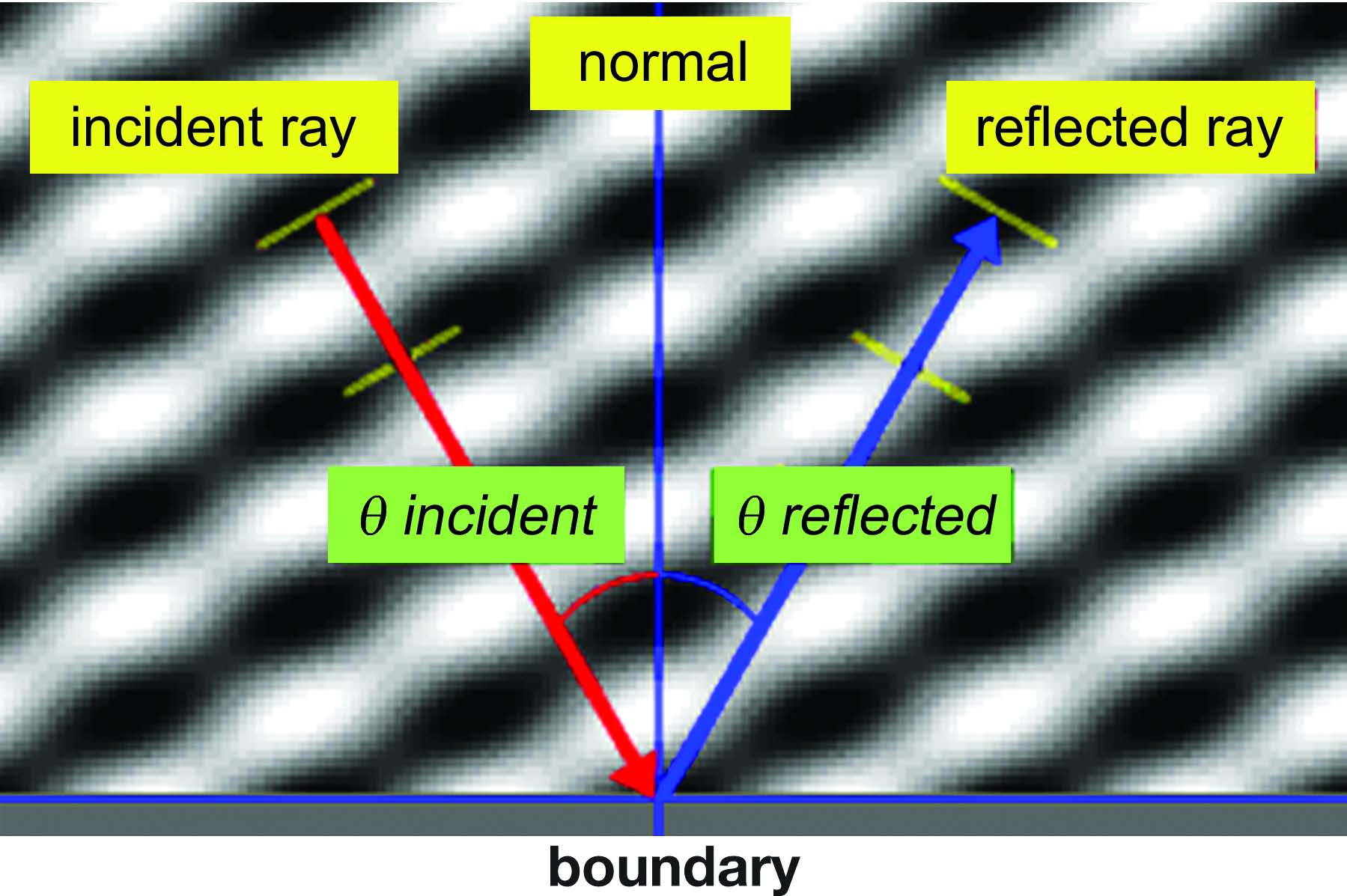
Before you get started, however, it is important to clarify a few terms:
- normal line: an imaginary line that is perpendicular to the boundary
- ray: a line perpendicular to the wave front depicting the direction the wave is moving
- incident ray: the ray that depicts the direction of the wave front that is moving from the point of origin toward the barrier
- reflected ray: the ray that depicts the direction of the wave front moving away from the barrier
- angle of incidence (θi): the angle the incident ray makes with the normal line
- angle of reflection (θr): the angle the reflected ray makes with the normal line
The preceding illustration is an example of a ray diagram. Ray diagrams are often used when studying waves. A ray is a line that depicts the direction that a wave travels. It is always drawn perpendicular to the wave. A ray only shows the direction of a wave, not the wave itself. In the preceding illustration, the incident and reflected rays are drawn. As well, the incident and reflected wave fronts are also sketched in as yellow lines. The wave fronts are perpendicular to the rays. Ray diagrams are a convenient tool to use when studying waves because they represent the direction of motion.
 Self-Check
Self-Check
SC 1. You might want a printable copy of the following diagrams.
- Draw in the incident ray and the normal line on each of the following diagrams.
- Label the angle of incidence.
- With a protractor, determine the angle of incidence.
The blue line at the bottom of each diagram is the boundary.
 Self-Check Answers
Self-Check Answers
SC 1. The red arrow is the incident ray, and the blue line is the normal. The red angle is the angle of incidence.
We have all heard the echo of our voice or seen the reflection of our face in a puddle. We have all, in some way, experienced the reflection of waves. Simply put, reflection occurs when a wave "bounces" off a surface. But how exactly does a wave bounce off a surface? In this section you will use a simulation to investigate the reflection of mechanical waves.
On the Water Reflection simulation, select “Show Angles” (![]() ) and “Mirror Mode” (
) and “Mirror Mode” (![]() ) at the top of the window and “Show Calcs” (
) at the top of the window and “Show Calcs” (![]() ) at the bottom. Use the simulation to answer the following questions.
) at the bottom. Use the simulation to answer the following questions.
 Module 8: Lesson 2 Assignment
Module 8: Lesson 2 Assignment
Remember to submit the answer to TR 1 to your teacher as part of your Module 8: Lesson 2 Assignment.
 Try This
Try This
TR 1. Using the values provided in left column of the data table, set the source angle on the simulation. You can set the source angle by dragging the slider below “Source Angle” or clicking the button (#) next to “Source Angle” and filling in the value. Then click “Play,” and record the angle of reflection. Although you can simply read the angle of reflection out of the angle data box, it is helpful to actually watch the reflection occur. It may help to turn on “Highlight Reflection” (![]() ) in order to clearly see the reflected waves. Complete the chart.
) in order to clearly see the reflected waves. Complete the chart.
Source Angle (θ incident) |
θ Reflected |
10.0° |
|
20.0° |
|
30.0° |
|
40.0° |
|
50.0° |
|
60.0° |
|
70.0° |
|
80.0° |
|
 Self-Check
Self-Check
SC 2. What is the relationship between the angle of incidence for a wave and its angle of reflection?
 Self-Check Answers
Self-Check Answers
SC 2. The angle of incidence is equal to the angle of reflection in all cases.
You have just discovered the law of reflection, which states that the angle at which a wave approaches a barrier is equal to the angle at which it is reflected. Expressed as an equation, it is
![]()
Your table should show you that the angle of reflection is the same as the angle of incidence. In other words, a wave will bounce off a wall at the same angle that it approached the wall.
